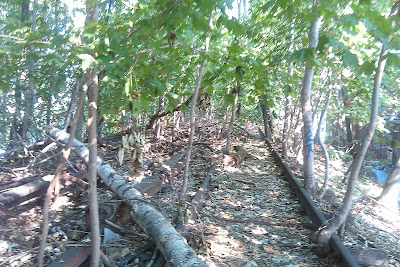Visualize it and It will Happen!
Here are the renderings from Urban Design Week. I’m not sure why they didn't call it the Queens Highline, but these sketches look pretty good and incorporated most of the ideas desired. I wish we had an opportunity to communicate with the designers and architects who worked on our ideas.
South Queens GREENway by Jennifer Cromie / Newtownards, UK
Rockaway Greenway Queens by Achva Benzinberg Stein / New York, NY: http://www.urbandesignweek.org/1987893/
And then I was asked to speak...

I was asked to speak for a few minutes and make a case for creating public spaces in unusual places. I gave a 5 minute presentation which I won't post right now as I'm adding charts and facts as I gather more pertinent information, especially focusing on the historical preservation, the value to the community and the need for such a space in Central to South Queens to create more awareness as to why restoration is essential and to build interest in this valuable space sooner rather than later.
What do you think of the renderings?
























